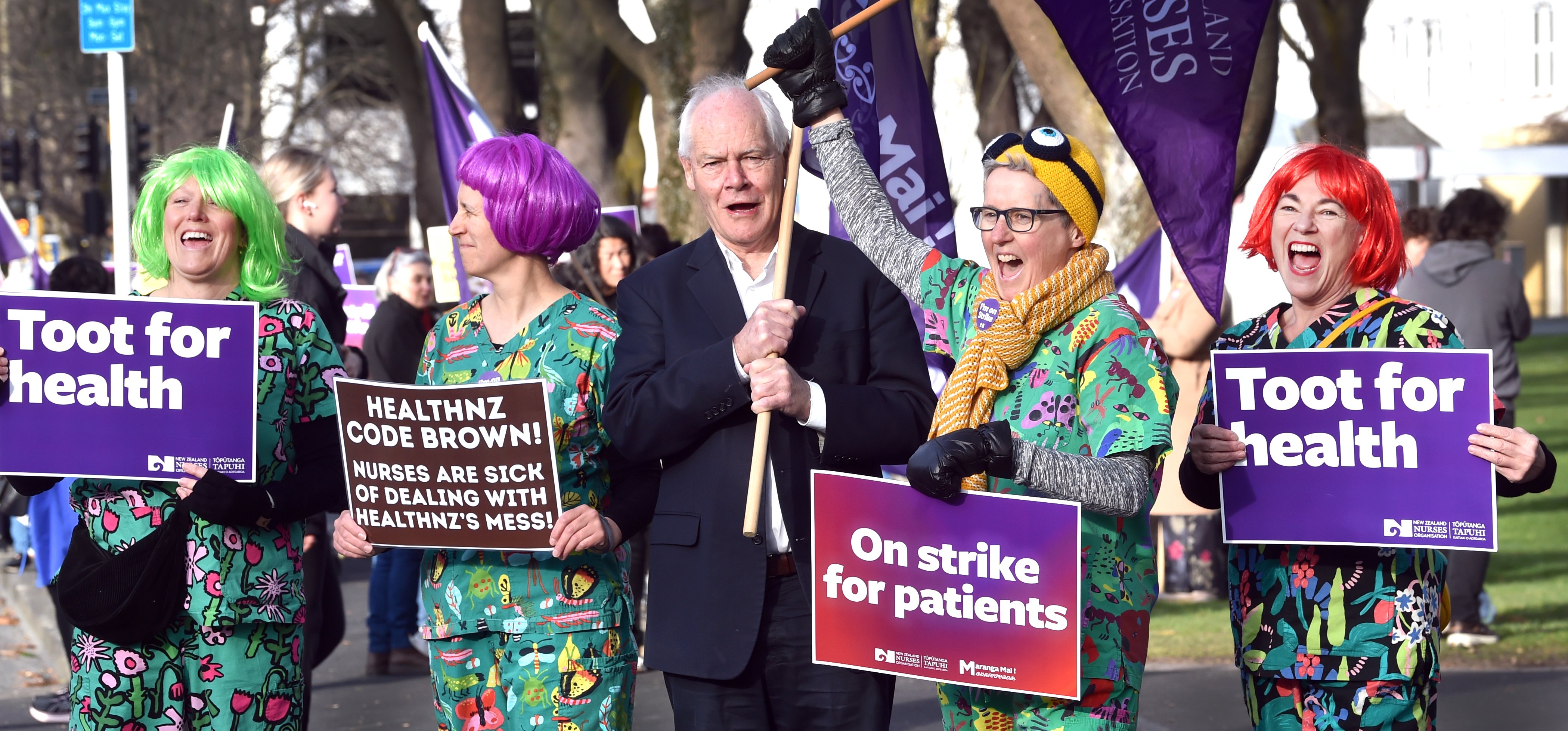Under-staffing at Dunedin Hospital could become a life-or-death matter, nurses say, after data was released showing the extent of the problem.
The claims come after Health New Zealand Te Whatu Ora (HNZ) finally released a months-delayed report about staffing levels — the day before yesterday’s nurses’ strike.
The data, referred to as "shifts below target", showed that the Southern district hospitals’ day shifts were under-staffed 50% of the time — and 33% of the time overall.
The most frequently under-staffed ward was Dunedin Hospital’s medical assessment unit, otherwise known as ward 6A, at 51% of the time last year.
Other wards with under-staffing more than 20% of the time included Queen Margaret Delivery Suite, the ICU/HDU space, the children’s ward, the coronary care unit and cardiology.
Nurses who spoke to the Otago Daily Times during the strikes yesterday said conditions had become increasingly untenable.
Ruth Ballantyne, who works in outpatients, said her colleagues in inpatients had situations where people were having falls because a nurse was not able to respond to their call quickly enough.
"You have people who want to go to the toilet or use a bedpan, and they call for a nurse and they have to wait, and sometimes they can’t wait.
"It’s not unless you’ve got a relative who’s an inpatient that you will see the nurse is desperate to give the care their family and friends deserve, but they haven’t the time or the number of nurses required to do that."
Asked whether under-staffing was a life or death matter, New Zealand Nurses Organisation (NZNO) president Anne Daniels said it could become that.
"We always prioritise the patients and their needs in a kind of triage manner, but it could lead to delays, and delays actually can cause harm. So we know this, and we do the best we can.
"For instance, if somebody needs a procedure done in the cath lab because it’s urgent, I’m not hoping that there would be any delays because of staffing, but that could be crucial, potentially life and death."

But Ms Daniels said patients were coming into the ward "sicker and sicker", and it was more like an acute overflow ward for the medical wards on the eighth floor.
"So that means that those nurses will be running. They won’t be having their breaks. They won’t be having their meals.
"They will go home physically mentally and emotionally exhausted, aching all over. I know this, and know that they have to go back and do it again the next day."
HNZ was unable to provide staffing figures for Dunedin Hospital’s beleaguered emergency department.
HNZ executive director Dr Richard Sullivan said the data highlighted by NZNO was not a proxy for understaffing.
"It is a ‘moment in time’ measure, that is often capturing just five minutes of an eight-hour shift. Using this data in isolation to claim that wards are under-staffed and unsafe is misleading.
"There are significant challenges in our current approach to safe care methodologies, including variable data quality. For this reason, we don’t believe the current tool, which we don’t believe is used by any other country as a national tool, is fit for purpose."
NZNO chief executive Paul Goulter, who attended yesterday’s strikes in Dunedin, said the data reflected the "lived reality" of many nurses.
"That’s what they’re popping in every day, and it’s quite cute of [Health New Zealand] to say that was just a slice in time. It’s not a slice in time."
Mr Goulter said there would be further actions following the strikes.
"We think this has got to be sorted by bargaining, and that bargaining has to meet the needs of both the employer and the employees of our union members.
"So far there’s been no sign of that, but we will always be able to try to bargain an outcome to these things."












